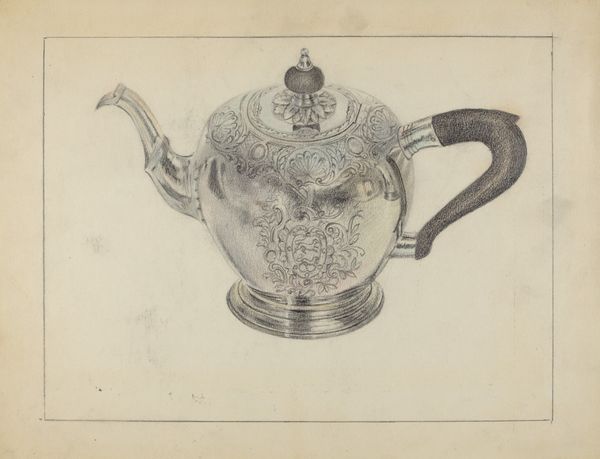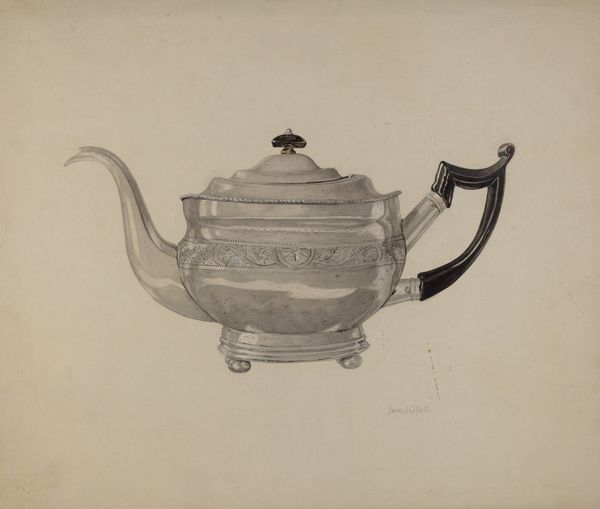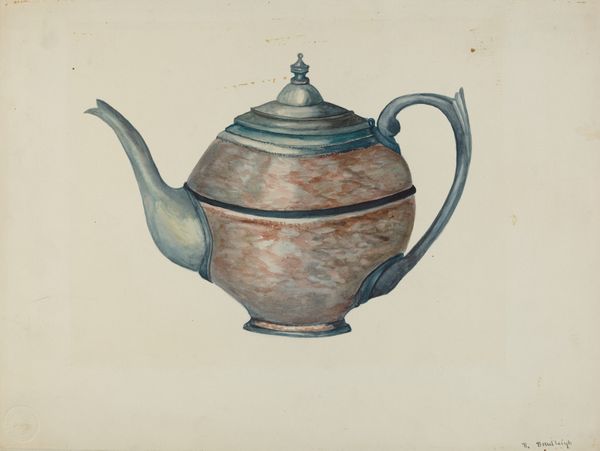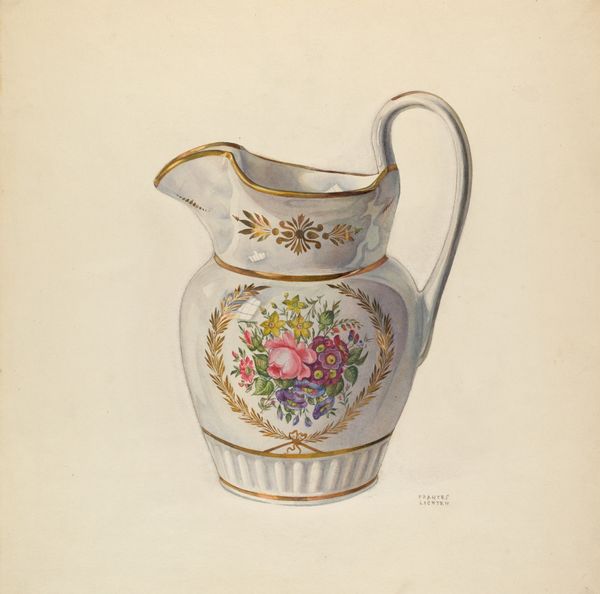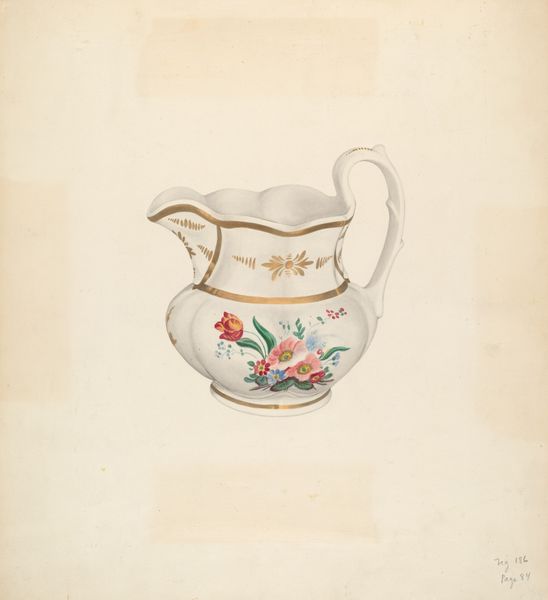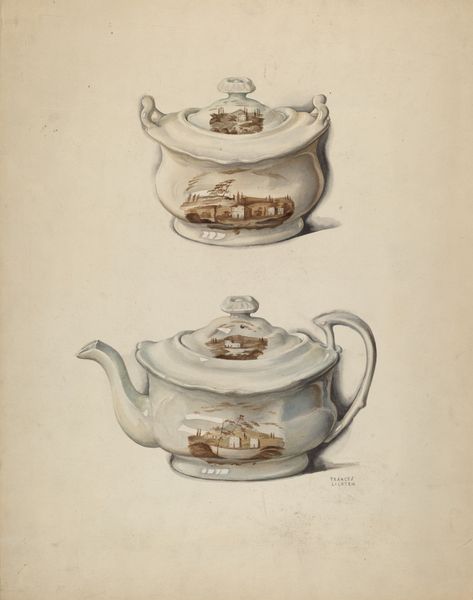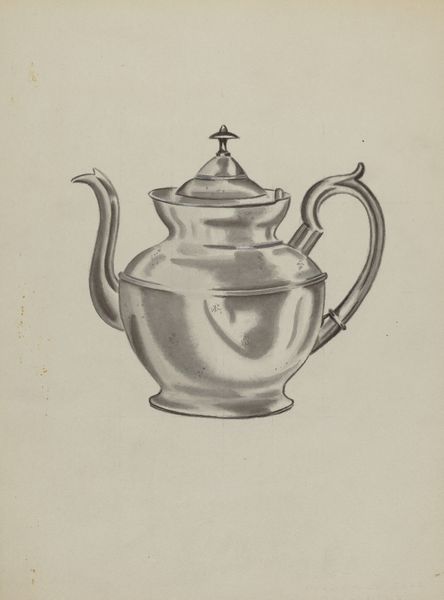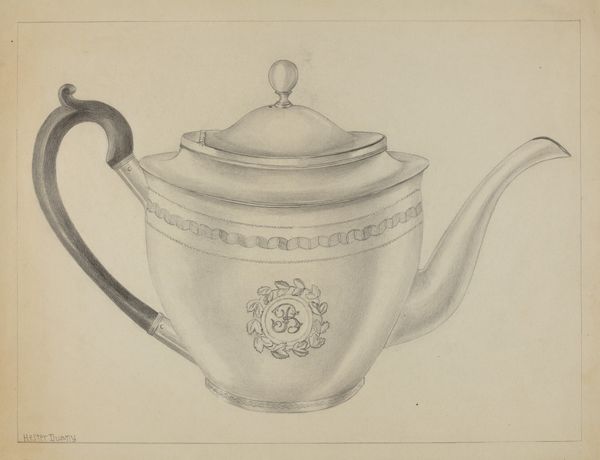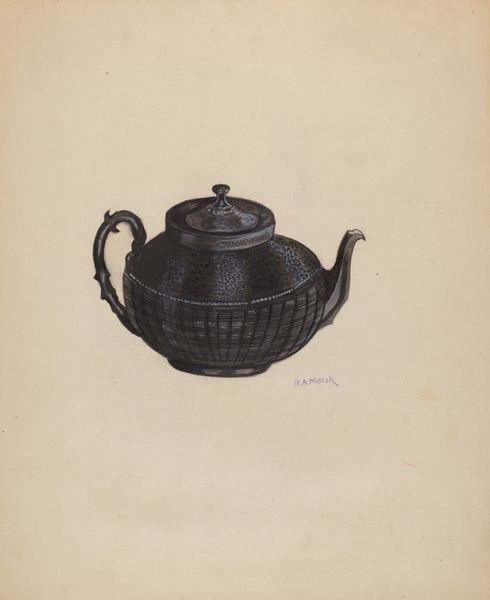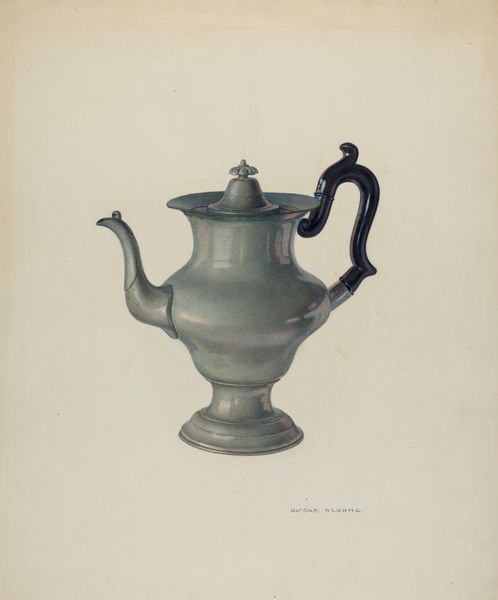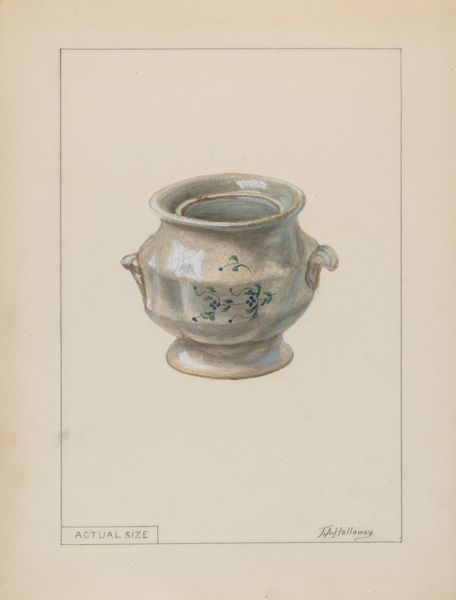
drawing, paper, watercolor
#
drawing
#
charcoal drawing
#
paper
#
watercolor
#
pencil drawing
#
watercolour illustration
Dimensions: overall: 30.7 x 23.2 cm (12 1/16 x 9 1/8 in.)
Copyright: National Gallery of Art: CC0 1.0
Curator: Here we have Thomas Holloway's "Teapot," created circa 1936, using watercolor, pencil, and charcoal on paper. Editor: My first thought is how delicately it's rendered. There's a fragility to it, like it’s holding a quiet story about domestic labor and afternoon teas. It’s very... restrained. Curator: I agree about the delicacy, but that restraint intrigues me. Look at how the artist modulates tone with such sensitivity, particularly across the curved surfaces. Notice how those subtle tonal variations model volume and generate an ethereal almost luminous quality. The precision of line is also remarkable, contributing to an aesthetic unity. Editor: And what about the very conventional subject? A teapot. Perhaps this subject points to the rigid class structures of 1930s Britain. Consider how this intimate domestic object embodies notions of comfort and normalcy. Who had the time and privilege for leisurely tea, and who didn't? The presence of the artwork in this context seems fraught with tension. Curator: An astute point about class! From my perspective, the subject offers a framework for the artist to explore purely formal problems of representation. Notice how he simplifies and stylizes while never truly losing the fundamental object itself. It's less about what is depicted, but rather *how* it’s rendered through hue and contour. Editor: True, but even in its aestheticized rendering, the very presence of this “humble” object is, I think, anything but innocent given what was happening socially and politically in that era. Everyday objects contain silent witnesses to those events, and it is crucial to consider them. Curator: Well, thinking purely about its aesthetic presentation—its use of subtle gradations and a muted palette—that renders it timeless, almost spectral, but never entirely divorced from its humble origins, which gives me pause, indeed. Editor: Indeed. This "Teapot" allows us to see how even the simplest object embodies complex historical and emotional layers—prompting further investigation.
Comments
No comments
Be the first to comment and join the conversation on the ultimate creative platform.
